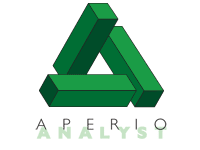Analyst
Key features of Analyst:
› Valuation, Investment Appraisal and DCF Analysis
Traditional valuation methodology together with DCF analysis enables simple appraisals through to complex cashflow analysis of investments. Voids, irrecoverable costs, refurbishments and rental growth can all be factored into the results. These can then be output in clear concise reports which can be customised with your logo and corporate colour.
› International Investments
Analyst works well in an international real estate investment context because it enables the creation of international portfolios that accommodate the various lease structures, differing cost treatments, rent indexation issues and cross border currency conversions necessary to analyse investments across international markets.
In addition to the fundamental data elements that one would expect, Analyst delivers critical key functions such as:
- Transparency of non-recoverable costs
- Statutory lease breaks
- Indexation thresholds
- Indexation holidays
- Indexation ceilings
- Mixed rental indexation and reviews
- Multi-currency portfolios
Analyst is a comprehensive tool for investors who need to create accurate cash-flow models for pan-European portfolios of real estate assets.
› Dynamic Excel links, data import and our Property Investment Resource
Analyst can create a dynamic or "live" link to your own spreadsheets. This means that any changes to property data held in Analyst e.g. lease renewals, rent reviews etc can automatically be refreshed through to the linked spreadsheet, without the need for manual updates. So in addition to being a powerful analysis tool itself, Analyst also delivers a further level of analytical sophistication utilising your own bespoke spreadsheets.
Data can be easily imported into Analyst from other systems using the PISCES data exchange standard or directly from Excel spreadsheets.
Aperio Systems also offer a Property Investment Resource facility to Clients, which is effectively an outsourced data assembly function and includes such things as a PDF conversion service.
› Portfolio merging, "What if...?" scenarios and "On the fly" appraisals
This is a scenario analysis feature which enables you to run "what if...?" scenarios to see the results of merging groups of assets and is particularly useful when appraising new assets to see how a purchase would impact upon your existing portfolios. "On the fly" appraisals are investment appraisals that are developed dynamically, i.e. a property can be sold out of or aquired into a portfolio at any point on the DCF timeline with the impact on the IRR and valuation instantly visible.
› Virtual portfolios
Virtual portfolios can be created from a master portfolio and are in essence a sub-set of the master. So virtual portfolios can be set up by region or sector for example, and separately analysed. However as these virtual portfolios remain linked to the master portfolio any changes to the main core data will be reflected through to the virtual portfolio automatically, without the need for separate manual updates.
› Rolling Exit Valuations
The DCF function in Analyst displays a rolling exit valuation, which is the value calculated at any particular point in time taking into account capital expenditure and receipts.
› Rolling IRRs
The DCF function in Analyst displays a rolling IRR, which is the return given at any particular point in time should the property be sold at the value shown at that point in time, taking into account capital expenditure and receipts. It gives the user an easily identifiable timescale in which to pin point the optimum time in which to sell a particular property.
› Drill down transparency
Analyst gives the user the facility to instantly see the origin of a figure in a cashflow, the detail of any income calculation, rental growth calculation and exit valuation with a single mouse click.
› MIRR
Analyst is unique in its ability to calculate both an Internal Rate of Return (IRR) and a Modified Internal Rate of Return (MIRR). The IRR calculation alone can exaggerate the average return on an investment since it runs the cash flows forward at an internal rate, the same rate as the overall project. So, for example, if the IRR is 20% in year 10, the cash flows are run forward at 20% for each year 1 through 10.
Because the IRR can exaggerate the average return on investment, Analyst allows you to calculate a modified internal rate of return.
The MIRR calculation uses; a) the initial investment amount; b) a series of projected after-tax cash flows which are projected at a rate that you supply; and c) the after-tax sales proceeds in a given year to calculate a “Future Wealth” amount for years 1 through 10, in the case of a 10 year appraisal. An average year-to-year return is then calculated using the initial investment amount and the Future Wealth amount for each of the 10 years.
MIRR Example: If we are looking at year 5, we would use the initial investment amount, the series of after-tax cash flows for years 1 through 5, the after-tax return on the cash flows based on the interest rate that you supply and the after-tax sales proceeds in year 5 to calculate a Future Wealth amount for year 5. We then take your initial investment amount and the Future Wealth amount that was calculated for year 5 and determine an average yearly return that would be required to accumulate the future wealth amount over the five year period. The MIRR calculation provides a better average return estimate since you supply the anticipated rate of return to run the cash flows forward at. The cash flows are not run forward at an internal rate that could greatly exaggerate your return on investment.
Analyst is unique in calculating both an internal rate of return (IRR) and a modified internal rate of return (MIRR) thus giving an accurate financial picture with no value exaggeration as is often caused by purely IRR appraisals.
